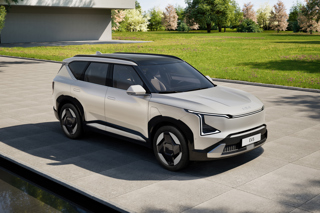The fleet proportion of 55.25% in May, which is consistent with earlier months, suggests a long-term stability in the market. However, it should be remembered that this is not a normal level of demand: the year-to-date fleet share is now 51.4%, which is the highest since before the recession.
The expectation from last year that 2011 would turn out to be “the year of fleet” has been fully borne out. With retail customers nervous about declining real incomes and the prospect of higher inflation, there is a reluctance on the part of private buyers to commit to a new car.
On the other hand, corporate profits are generally quite healthy at present and there is a certain pent-up demand from fleets who delayed the purchase of new cars in the middle of the recession – although the full effect of that is to be seen in the massive 26.9% jump in light commercial vehicle sales so far this year.
At the top of the fleet sales table in terms of sales – and very nearly top in terms of growth rate – is Vauxhall. To be more precise, it is the Vauxhall Insignia.
While most other Vauxhalls, except for the new Meriva, are stable, the Insignia more than doubled its fleet sales to a rather improbable 17,000 YTD. That is almost the same as the combined sales of its two major rivals, the Passat and Mondeo (just under 19,000 in total).
As ever with Vauxhall, it is hard to know if this reflects more aggressive marketing or a genuine surge in demand – one Vauxhall dealer we spoke to said that the company still tends to turn on the promotion hose periodically.
Arch-rival Ford had a better May, but is still well down YTD. This is to be expected as the new Focus is only just starting to have an effect, but Ford is pointing to the new C-Max as a big success.
At 6,000 fleet sales YTD, it is still well behind the 9,500 of the traditionally class-leading Zafira, but at least now it is playing in the same division.
Behind the two leading ‘British’ competitors comes Volkswagen. The interesting thing about Volkswagen is that there is no model one can point to for its increase in sales.
Apart from the hopeless Fox and the stable Golf, all Volkswagen models were up by a respectable amount. In a way, that is the most worrying pattern for competitors. If a company rises with one model, it is likely to fall with that model a few years later, but if it is rising across the board that suggests the whole brand is on the march.
Certainly, competitors privately admit that they spend a lot less time watching Vauxhall than they did five years ago and a lot more time watching Volkswagen.
BMW is in fourth place – a phrase that still has people scurrying to check the figures, can that really be true? But its growth is very much down to one model, the new 5 Series. Fleet sales have tripled YTD to 6,700 which is an excellent result, but the fleet proportion is now looking very high. Two-thirds (66.7%) of 5 Series sales are now fleet, while almost half of Mercedes-Benz E-Class sales (49.8%) are to corporate buyers.
The progress of value brands Kia and Skoda – their products are now far too good to be dismissed as economy models – will seriously worry traditional mainstream brands. A promise of competitive, and sometimes superior, products at lower prices is a pretty compelling offer.
By Jay Nagley


















Login to comment
Comments
No comments have been made yet.